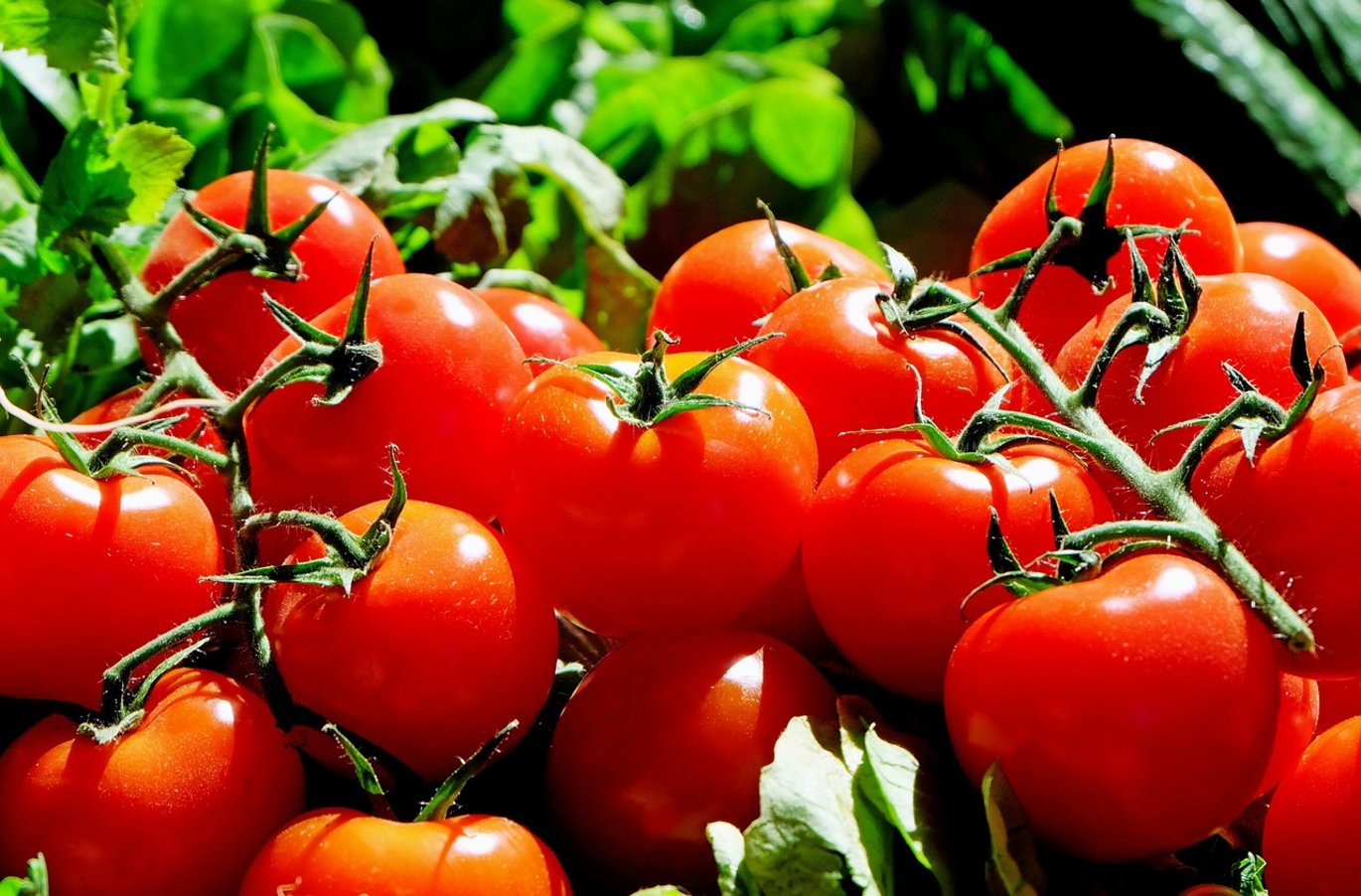Nyt studie giver en bedre forståelse af tomaters genetik
En ny sekventeringsmetode giver forskere mulighed for at aflæse organismers genomer mere præcist end tidligere muligt. Dette studie anvender den nye metode til tomater, hvilket viser, at den muliggør væsentligt forbedret genomisk selektion. Studiet er blevet offentliggjort i juni-udgaven af tidsskriftet Nature.

Et samarbejde mellem forskere ved Agricultural Genomics Institute i Shenzhen (Chinese Academy of Agricultural Sciences) og Center for Kvantitativ Genetik og Genomforskning (Aarhus Universitet) er netop offentliggjort i tidsskriftet Nature. Deres arbejde bruger en mere nøjagtig metode til at sekventere tomater (læse deres DNA). Tidligere ville forskere sekventere ved hjælp af et enkelt referencegenom (dvs. hver ny tomat sammenlignes med en referencetomat). Nu er det muligt at sekventere ved hjælp af flere referencegenomer (dvs. hver ny tomat sammenlignes med snesevis af referencetomater). Dette fremskridt gør det muligt for forskerne at registrere genetisk variation mere nøjagtigt og fuldstændigt.
Denne artikel viser, at for tusindvis af tomategenskaber gør den nye sekventeringsmetode det muligt at forklare i gennemsnit 24 % mere arvelighed (dvs. at fange en fjerdedel flere genetiske faktorer). Ydermere viser forskningen, hvordan den nye sekventeringsmetode dramatisk kan forbedre ydeevnen af genomisk selektion (hvor godt vi kan opdrætte tomater for at maksimere ønskværdige egenskaber såsom størrelse, smag og sygdomsresistens).
- ’Dette arbejde kombinerer nye udviklinger inden for sekventeringsteknologi med funktionerne i den statistiske software LDAK. Det forbedrer vores forståelse af tomatplanten væsentligt’, uddyber en af forfatterne, Doug Speed, og fortsætter: ’Samlet set repræsenterer projektet et stort gennembrud inden for tomatgenetik, der vil muliggøre meget mere effektive tomatavlsprogrammer.’
Publikationens titel er Graph pangenome captures missing heritability and empowers tomato breeding.
Supplerende oplysninger | |
Vi bestræber os på, at alle vores artikler lever op til Danske Universiteters principper for god forskningskommunikation. På den baggrund er artiklen suppleret med følgende oplysninger: | |
Studietype | Computational Genome study |
Finansiering
| This work was supported by grants from the National Natural Science Foundation of China (no. 31991180 to S.H. and no. 31801441 to Y. Zhou), the National Key Research and Development Program of China (no. 2019YFA0906200 to S.H.), the Key Research and Development Program of Guangdong Province (no. 2021B0707010005 to J.Z.), the Shenzhen Science and Technology Program (no. KQTD2016113010482651 to S.H.), the Agricultural Science and Technology Innovation Program (CAAS-ZDRW202103 to S.H.) and the US National Science Foundation (IOS-1855585 to Z.F.). |
Samarbejdspartnere | Forfattere og tilknytninger Shenzhen Branch, Guangdong Laboratory of Lingnan Modern Agriculture, Genome Analysis Laboratory of the Ministry of Agriculture and Rural Affairs, Agricultural Genomics Institute at Shenzhen, Chinese Academy of Agricultural Sciences, Shenzhen, China Yao Zhou, Zhiyang Zhang, Zhigui Bao, Hongbo Li, Yaqing Lyu, Yanjun Zan, Yaoyao Wu, Lin Cheng, Yuhan Fang, Kun Wu, Hongjun Lyu & Sanwen Huang Umeå Plant Science Center, Department of Forestry Genetics and Plant Physiology, Swedish University of Agricultural Sciences, Umeå, Sweden Yanjun Zan Key Laboratory of Biology and Genetic Improvement of Horticultural Crops of the Ministry of Agriculture, Sino-Dutch Joint Laboratory of Horticultural Genomics, and Institute of Vegetables and Flowers, Chinese Academy of Agricultural Sciences, Beijing, China Jinzhe Zhang Institute of Vegetables, Shandong Academy of Agricultural Sciences, Shandong Province Key Laboratory for Biology of Greenhouse Vegetables, Shandong Branch of National Improvement Center for Vegetables, Huang-Huai-Hai Region Scientific Observation and Experimental Station of Vegetables, Ministry of Agriculture and Rural Affairs, Jinan, China Hongjun Lyu State Key Laboratory of Agrobiotechnology, College of Horticulture, China Agricultural University, Beijing, China Tao Lin Boke Biotech, Wuxi, China Qiang Gao Boyce Thompson Institute, Cornell University, Ithaca, NY, USA Surya Saha, Lukas Mueller & Zhangjun Fei Robert W. Holley Center for Agriculture and Health, US Department of Agriculture, Agricultural Research Service, Ithaca, NY, USA Zhangjun Fei Institute of Integrative Biology & Zurich, Basel Plant Science Center, ETH Zurich, Zurich, Switzerland Thomas Städler Department of Botany and Plant Sciences, University of California, Riverside, CA, USA Shizhong Xu Department of Crop and Soil Sciences, Washington State University, Pullman, WA, USA Zhiwu Zhang Center for Quantitative Genetics and Genomics (QGG), Aarhus University, Aarhus, Denmark Doug Speed These authors contributed equally: Yao Zhou, Zhiyang Zhang, Zhigui Bao |
Ekstern kommentering | Denne opsummering er godkendt af førsteforfatteren. |
Interessekonflikter | Forfatterne erklærer, at der ikke er interessekonflikter. |
Læs mere
| Publikationens titel er Graph pangenome captures missing heritability and empowers tomato breeding. Den kan ses her: https://www.nature.com/articles/s41586-022-04808-9. |
Kontakt
| Professor Doug Speed, Center for Kvantitativ Genetik og Genomforskning. |
